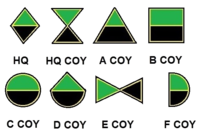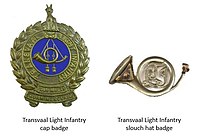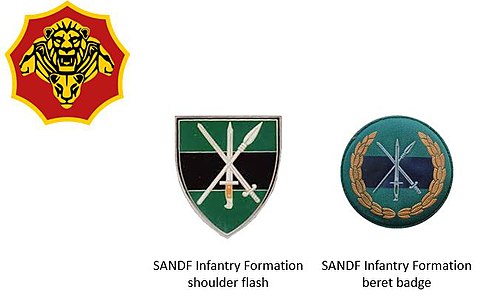
The Solomon Mahlangu Regiment is a reserve infantry regiment of the South African Army.
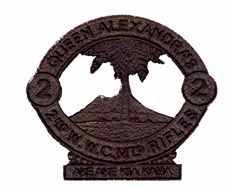
Queen Alexandra's Mounted Rifles (QAMR) is an armoured regiment of the New Zealand Army and forms part of the Royal New Zealand Armoured Corps. The regiment was formed in 1864 and is currently an armoured cavalry unit equipped with NZLAV.

The Cape Town Highlanders is a reserve mechanised infantry regiment of the South African Army.

The 52nd Lowland Volunteers is a battalion in the British Army's Army Reserve or reserve force in the Scottish Lowlands, forming the 6th Battalion of the Royal Regiment of Scotland, also known as 6 SCOTS. Due to its erstwhile association with the 1st Regiment of Foot, it is the senior Reserve line infantry battalion in the British Army. It is one of two Reserve battalions in the Royal Regiment of Scotland, along with 51st Highland, a similar unit located in the Scottish Highlands.

The Durban Light Infantry is a Motorised Infantry regiment of the South African Army. It lost its status as a Mechanised infantry regiment in 2010 in line with the rationalisation of resources. As a reserve unit, it has a status roughly equivalent to that of a British Army Reserve or United States Army National Guard unit.
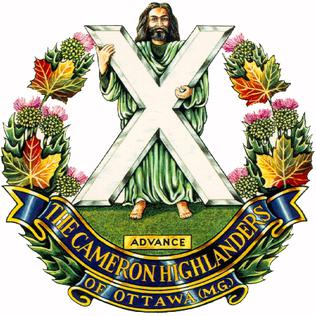
The Cameron Highlanders of Ottawa (Duke of Edinburgh's Own) is a Canadian Army Primary Reserve infantry regiment.
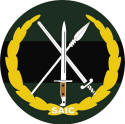
The South African Army Infantry Formation supervises all infantry within the South African Army.

The Cameronians (Scottish Rifles) was a rifle regiment of the British Army, the only regiment of rifles amongst the Scottish regiments of infantry. It was formed in 1881 under the Childers Reforms by the amalgamation of the 26th Cameronian Regiment and the 90th Perthshire Light Infantry. In 1968, when reductions were required, the regiment chose to be disbanded rather than amalgamated with another regiment, one of only two infantry regiments in the British Army to do so, with the other being the York and Lancaster Regiment. It can trace its roots to that of the Cameronians, later the 26th of Foot, who were raised in 1689. The 1881 amalgamation coincided with the Cameronian's selection to become the new Scottish Rifles.
The Lowland Brigade is a historical unit of the British Army which has been formed a number of times. It is traditionally Scottish as the name derives from the Scottish Lowlands.

The Andrew Mlangeni Regiment is a reserve infantry regiment of the South African Army.

The Chief Langalibalele Rifles is a reserve infantry regiment of the South African Army.

The Buffalo Volunteer Rifles (BVR) is an infantry regiment of the South African Army. As a reserve unit, it has a status roughly equivalent to that of a British Army Reserve or United States Army National Guard unit.

The Kimberley Regiment is an infantry regiment of the South African Army. As a reserve unit, it has a status roughly equivalent to that of a British Army Reserve or United States Army National Guard unit.

A Scottish regiment is any regiment that at some time in its history has or had a name that referred to Scotland or some part thereof, and adopted items of Scottish dress. These regiments were created after the Acts of Union in 1707 between England and Scotland, either directly serving Britain during its various wars, or as part of the military establishments of Commonwealth countries. Their "Scottishness" is no longer necessarily due to recruitment in Scotland nor any proportion of members of Scottish ancestry.
The 28th Infantry Brigade was a British Army formation which served during the First World War, the Second World War, the Korean War, The Malayan Emergency and Indonesian Confrontation.

The Royal Regiment of Scotland is the senior and only Scottish line infantry regiment of the British Army Infantry. It consists of three regular and two reserve battalions, plus an incremental company, each formerly an individual regiment. However, three regular battalions maintain their former regimental pipes and drums to carry on the traditions of their antecedent regiments.
The Royal Scots Borderers, 1st Battalion, the Royal Regiment of Scotland was an infantry battalion of the Royal Regiment of Scotland. The battalion formed on 1 August 2006 when its antecedent regiments - the Royal Scots and the King's Own Scottish Borderers - amalgamated just after the formation of the Royal Regiment of Scotland in 2006. On 1 December 2021, the battalion transferred to the new Ranger Regiment as the 1st Battalion, Ranger Regiment.
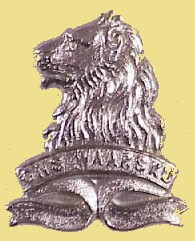
The General de la Rey Regiment is an reserve infantry regiment of the South African Army.
The 156th Brigade was an infantry brigade formation of the British Army. The brigade saw active service in both the First and the Second World Wars with the 52nd (Lowland) Infantry Division.

